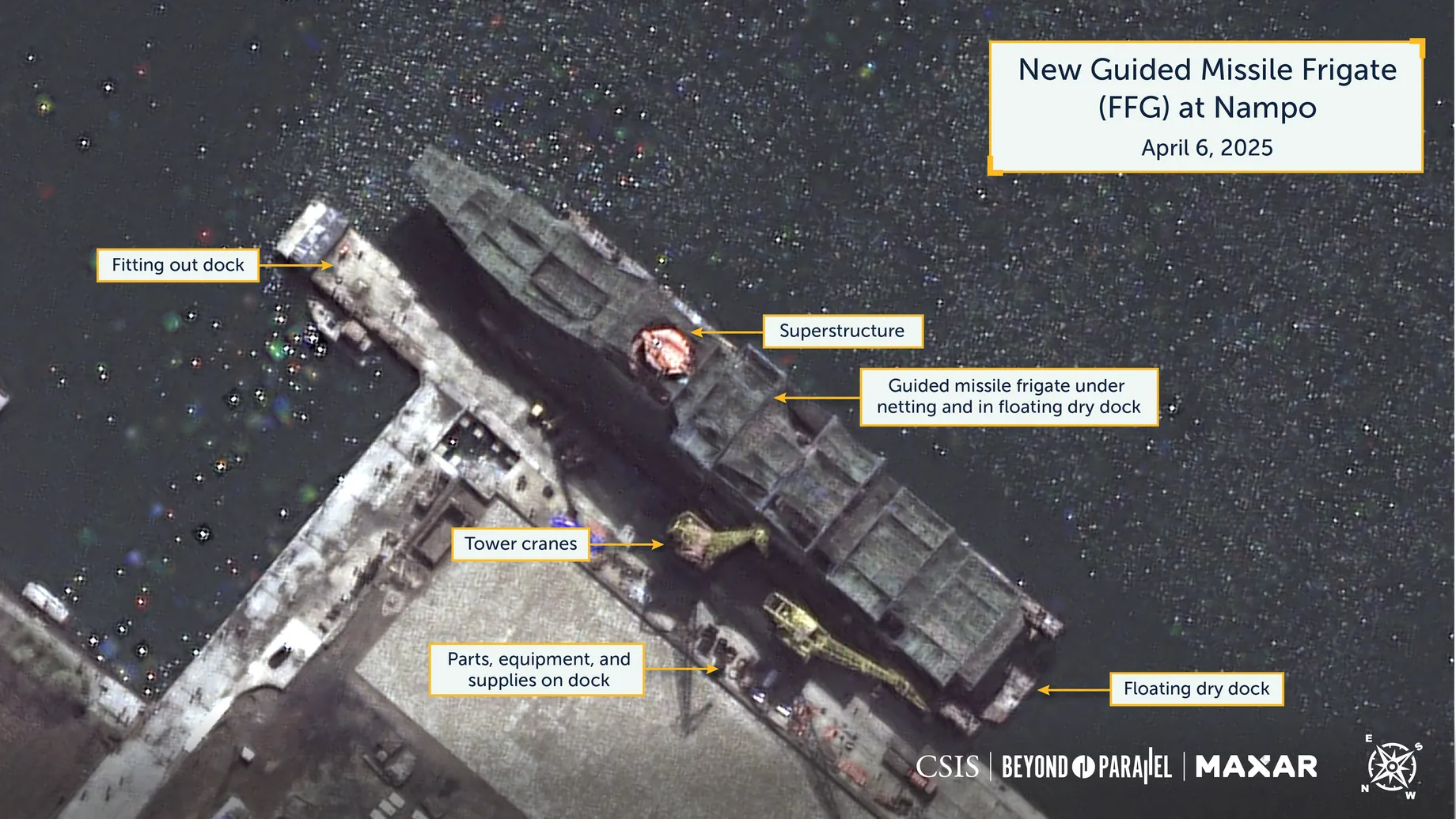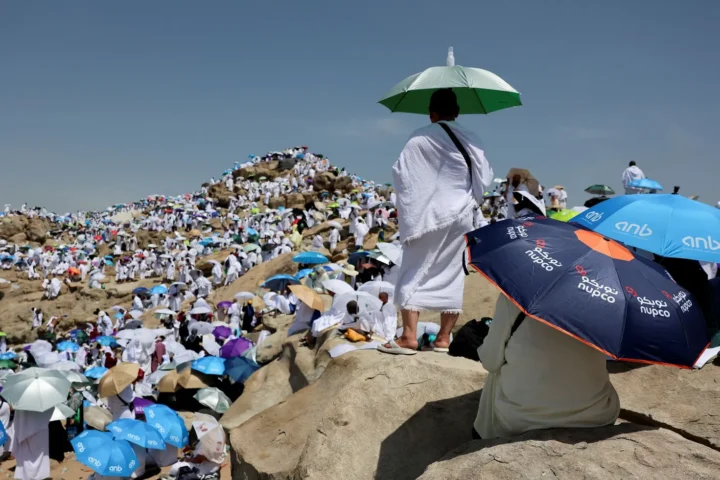While global attention remains focused on the war in Ukraine and rising tensions across Asia, North Korea is quietly boosting its military capabilities. According to the U.S.-based think tank Center for Strategic and International Studies (CSIS), North Korea is finalizing the construction of its largest warship to date — a new frigate approximately 140 meters in length, being assembled at the port of Nampo on the country’s western coast. This makes the vessel more than twice the size of the previously largest ships in North Korea’s fleet.
Satellite imagery provided by Maxar Technologies shows the ship’s enormous scale, suggesting that Kim Jong Un’s regime is aiming for a major leap forward in its maritime power. Analysts say the new frigate is nearly the size of comparable U.S. naval vessels. Today, the combined naval forces of the United States, South Korea, and Japan constitute the most powerful fleet in the Pacific. However, China has also been rapidly expanding its navy, now possessing the largest naval force in the world by sheer numbers.
North Korea’s Naval Modernization — Likely with Russian Assistance
Pyongyang appears determined not to be left behind in this regional arms race. Amid an aging fleet, Kim Jong Un is embarking on a significant modernization campaign. And, according to CSIS analysts, he may be doing so with help from Russia. As the war in Ukraine continues, North Korea is reportedly supplying Moscow with missiles, ammunition, and even military personnel in exchange for advanced technologies — including naval systems.
Experts believe Russia may be sharing its expertise in long-range precision strike capabilities. One of the Russian Navy’s strategic advantages is its ability to hit targets deep behind enemy lines using cruise missiles launched from frigates and submarines. These weapons are routinely used against Ukraine from the Black Sea. If North Korea has gained access to similar technology, this could mark a dramatic shift in its naval capabilities.
Missile-Carrying Frigate — Possibly with Helicopter Support
The new North Korean frigate is expected to be equipped with cruise missiles, possibly adapted versions of the Hwasal-2, which reportedly has a range of up to 2,000 kilometers. Current development appears to be focused on modifying these missiles for sea-based deployment.
This presents a serious threat, particularly to South Korea, a country vulnerable due to its small size and exposed geography. With its compact landmass and extended coastline, Seoul is an easy target for missile attacks. Although the frigate is not expected to be ready for sea trials for at least another year, experts are already warning of long-term implications for regional security.
Adding to the concern, North Korea has informed the International Maritime Organization of plans to build two helicopter-capable frigates, suggesting a move toward greater mobility and operational flexibility in its fleet.
Outdated Fleet Waiting for Overhaul
Despite the impressive number of vessels — about 400 ships and 70 submarines — the majority of North Korea’s naval assets are obsolete. Even its two largest frigates, the Najin-class, are considered barely operational. Moreover, North Korea lacks modern naval air defense systems, making its fleet vulnerable to precision-guided anti-ship missiles. Russia may also be providing assistance in this area by supplying technology to enhance Pyongyang’s maritime air defenses.
Strategic Pivot: Kim Jong Un Bets on Sea Power
With additional warships under construction — including a nuclear-powered submarine — North Korea seems determined to establish a more modern, capable navy. As Der Spiegel notes, “To survive a potential conflict with technologically superior rivals, North Korea’s navy still has a long way to go in catching up.” Kim Jong Un, it seems, is ready to meet that challenge head-on.
Through its latest actions, Pyongyang is making it clear that it refuses to remain a passive observer in the regional power competition. If cooperation with Russia in naval development proves to be true, East Asia could soon face a new and more dangerous strategic landscape — one where the already delicate balance of power is tipped even further toward instability.
This article was prepared based on materials published by Der Spiegel. The author does not claim authorship of the original text but presents their interpretation of the content for informational purposes.
The original article can be found at the following link: Der Spiegel.
All rights to the original text belong to Der Spiegel.




















